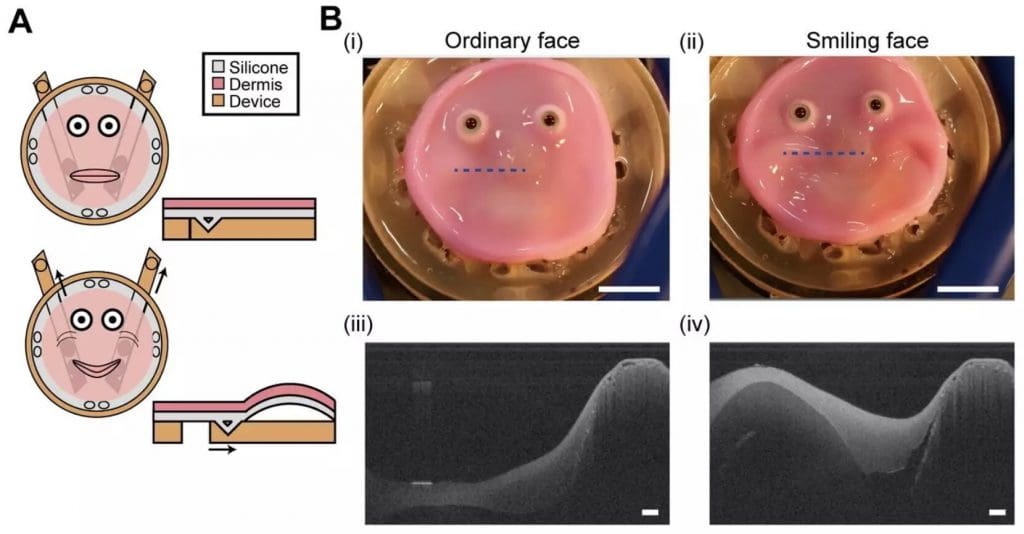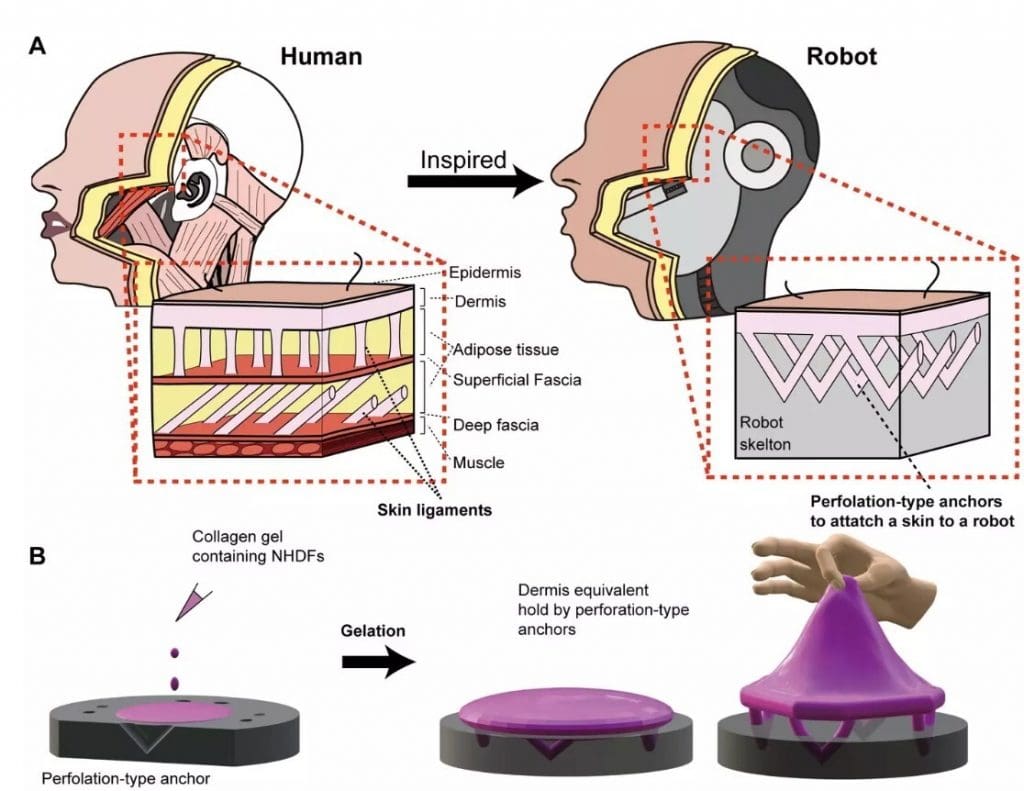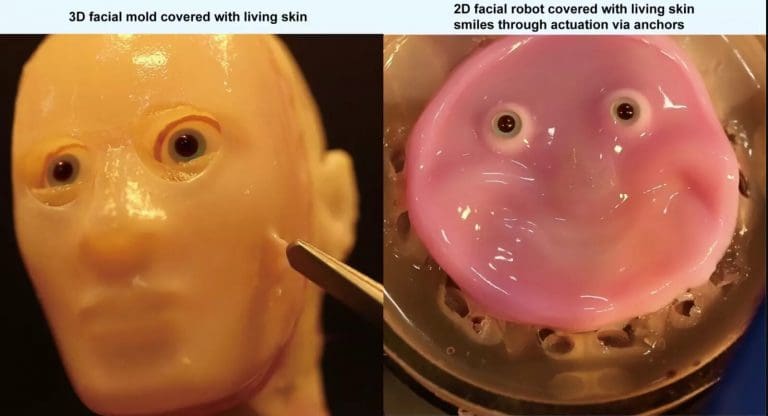Scientists in Tokyo have developed a groundbreaking innovation in robotics by creating lab-grown human skin for robots. Led by Professor Shoji Takeuchi from the University of Tokyo, the team successfully covered a robot’s face with a thin layer of human-like skin. This skin, made from human skin cells layered over a resin base, is capable of self-healing. Such technology is particularly valuable for robots designed to interact closely with humans in healthcare, service, and companionship roles.
The process involved creating dermal and epidermal cells, which were then attached to the robot’s face using perforations in the resin. These perforations were filled with a collagen gel to create a smooth, strong bond, allowing the skin to move with the robot’s mechanical components without tearing. However, maintaining a sterile environment to prevent bacterial infection is a significant challenge that the team continues to address.

Professor Takeuchi emphasized the potential for even more realistic skin by incorporating glands, pores, blood vessels, and fat. This advancement not only promises to improve the human-likeness of robots but also opens new avenues for medical research in areas like skin aging, cosmetics, and plastic surgery. The development of self-healing, sensory-integrated robots could revolutionize the field, bringing us closer to robots that can perform tasks with human-like dexterity and adaptability.
In addition to enhancing the appearance and functionality of humanoid robots, this technology could lead to significant advancements in prosthetics. Lab-grown skin with self-healing properties and integrated sensory functions might one day be used to create more lifelike and functional prosthetic limbs, improving the quality of life for amputees. This breakthrough could also pave the way for developing new treatments for skin injuries and diseases, leveraging the ability of the lab-grown skin to repair itself.

The implications of this research extend beyond robotics and medicine. As robots become more integrated into daily life, having them appear more human-like could ease interactions and increase acceptance in society. This technology, while still in its early stages, promises to bridge the gap between humans and machines, fostering a future where robots seamlessly blend into various aspects of human life.




